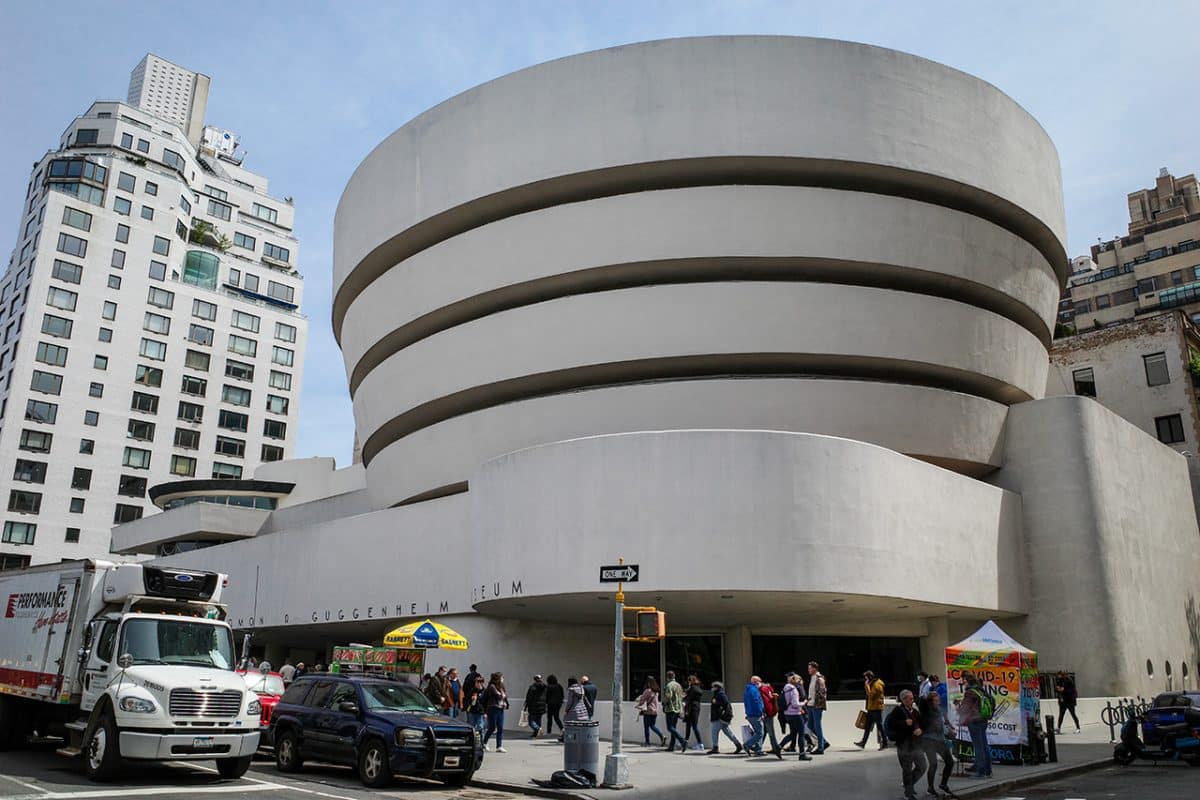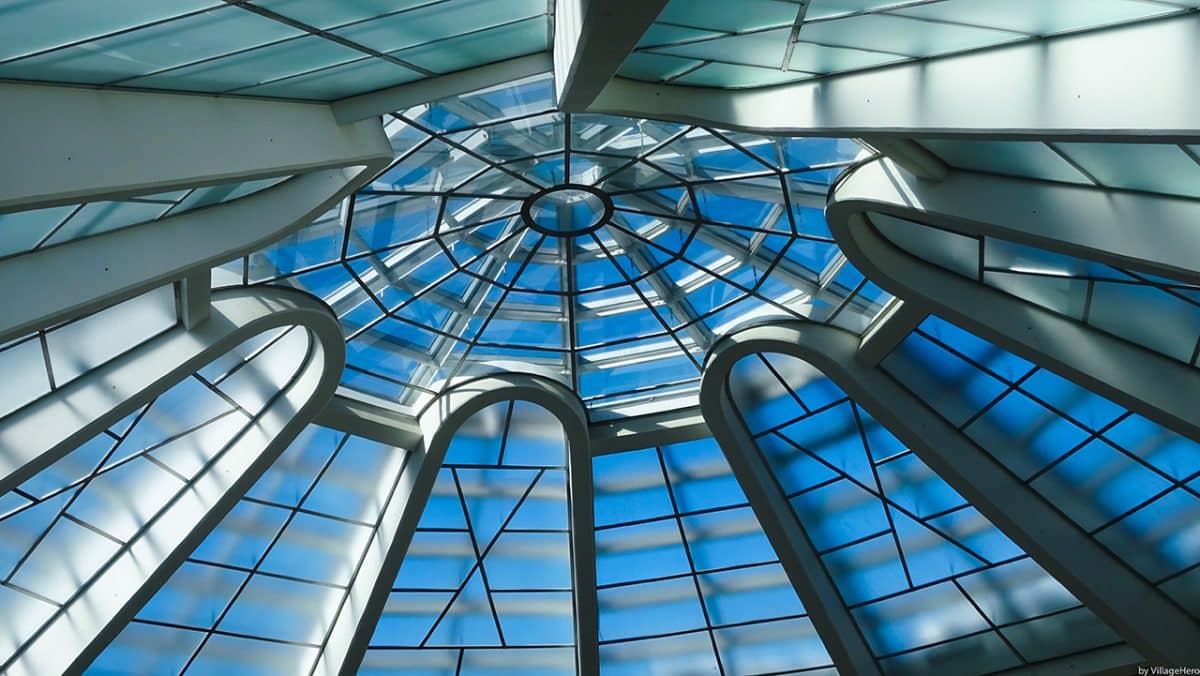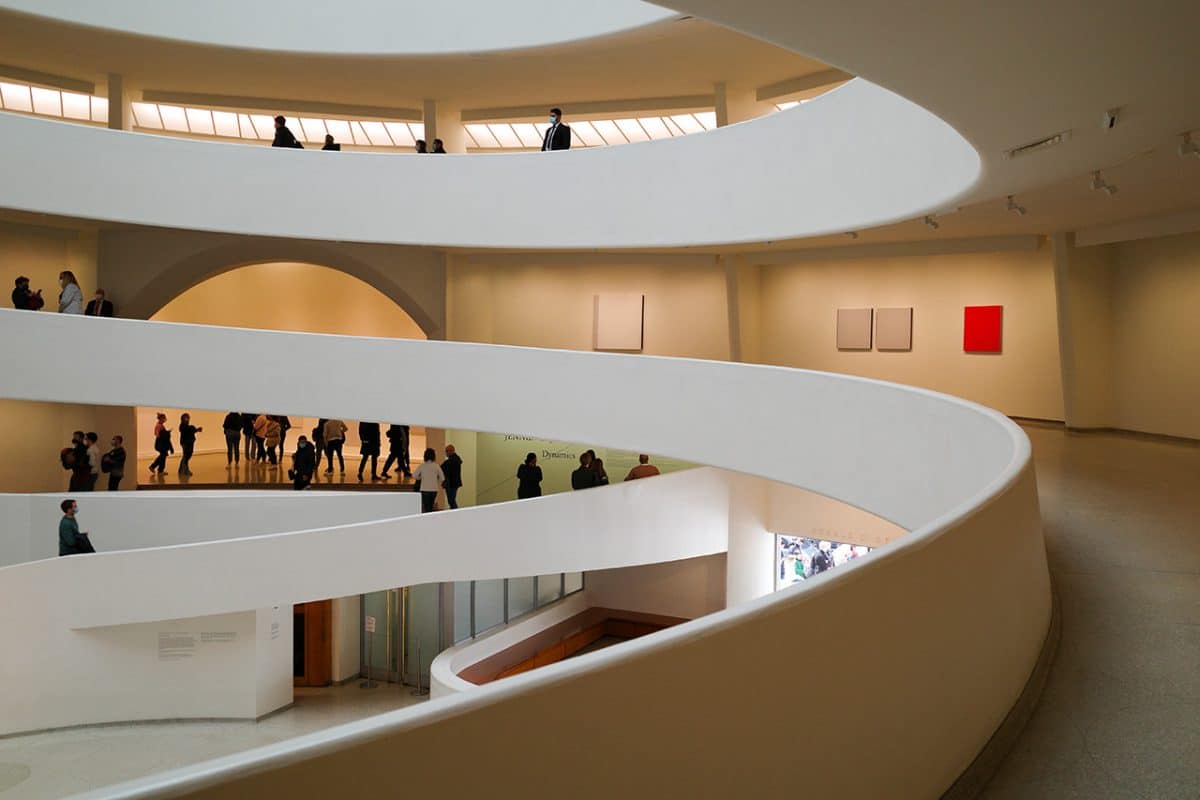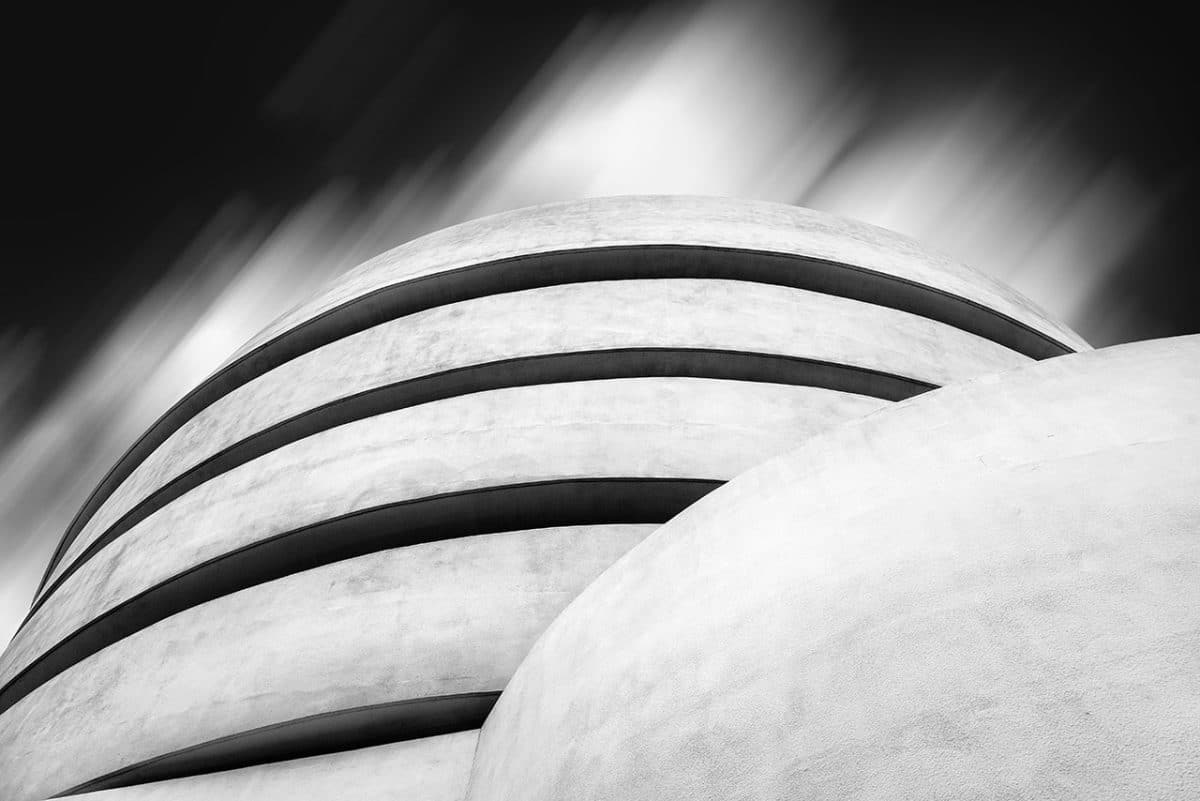On the edge of Central Park, on prestigious Fifth Avenue, stands a building unlike any other. The Guggenheim Museum is a Manhattan must-see, attracting visitors as much for its revolutionary architecture as for its exceptional art collections. This unique museum harmoniously combines container and content, offering an immersive experience in the world of modern and contemporary art. Whether you are passionate about abstract art or simply curious to visit one of New York’s most original monuments, the Guggenheim guarantees you a memorable visit.
A dual artistic and architectural attraction
History and origins of the museum
The story of the Guggenheim Museum begins with Solomon R. Guggenheim, a wealthy American collector with a passion for abstract art. His fascination with what he called “non-objective” art led him to amass an impressive collection that he wanted to share with the public. In 1939, he opened the Museum of Non-Objective Painting in Midtown Manhattan, the first stage in what would become one of New York‘s most emblematic cultural institutions.
The Guggenheim ‘s ambitious vision really took shape when he commissioned architect Frank Lloyd Wright to design a building dedicated to his collection. After years of planning and work, the museum as we know it today officially opened its doors on 21 October 1959. Sadly, neither Solomon Guggenheim nor Frank Lloyd Wright would see the completion of this joint project, both dying before the inauguration.
International recognition of the building was not long in coming. The museum is a UNESCO World Heritage Site and is on the list of National Historic Landmarks in the United States, in recognition of its cultural and architectural importance.
Frank Lloyd Wright’s revolutionary architecture
When you think of the Guggenheim, it’s impossible to separate the collections from the exceptional building that houses them. The work of Frank Lloyd Wright overturned the codes of traditional museum architecture, proposing a radically new approach to exhibition space.
Avant-garde design
The exterior of the museum is immediately striking for its distinctive organic shape. Often compared to a nautilus shell, a flying saucer, or even an upside-down coffee cup, the building’s silhouette is instantly recognisable in New York’s urban landscape. Its immaculate white façade contrasts with the surrounding straight buildings, creating a striking focal point on Fifth Avenue.
This architectural creation was no mean feat. Frank Lloyd Wright spent 15 years working on it and produced more than 700 sketches before arriving at the final design. Its most remarkable feature is that the upper rings are much wider than the lower ones, giving the building an almost extraterrestrial shape that leaves no one indifferent.

An innovative interior
If the exterior of the Guggenheim is impressive, the interior reveals Wright’s true genius. Instead of offering conventional floors, the architect designed a continuous spiral ramp that winds from the ground floor to the top of the building. This revolutionary design transforms the visit into a fluid walk through the art, offering an ever-changing perspective on the works on display.
At the centre of this spiral is a monumental atrium topped by a glass roof that bathes the space in abundant natural light. This ingenious solution compensates for the almost total absence of windows in the museum’s rotunda, creating a special atmosphere in which to contemplate the works of art.
At the time of its construction, the building provoked controversy, with some critics believing that its spectacular architecture risked overshadowing the works it housed. Today, this duality is seen as the very strength of the Guggenheim, where container and content interact in perfect harmony.

Permanent collections
The Guggenheim Museum houses a number of prestigious collections, making it one of the world’s leading centers for modern and contemporary art. These permanent collections offer an exceptional panorama of the major artistic movements from the end of the 19th century to the present day.
The Guggenheim Collection
At the heart of the museum is the founding collection built up by Solomon R. Guggenheim himself. Focusing on abstract and modernist art, it includes major works by artists who revolutionised the history of art in the early 20th century. There are exceptional works by Vasily Kandinsky, of whom Guggenheim was a fervent admirer, but Impressionism and Expressionism are richly represented with paintings by Pablo Picasso, Marc Chagall, Piet Mondrian and many other masters of modernism.
The collection covers a period from the 1860s to the most contemporary art, offering a panoramic view of the artistic evolution of recent centuries. Modern sculptures feature prominently, particularly those by Constantin Brâncuși, which are regularly exhibited and enhanced by the building’s distinctive architecture.
The Thannhauser collection
The other mainstay of the permanent collections is the Thannhauser collection, named after the German art dealers who built it up. Justin and Hilde Thannhauser were renowned for their exceptional flair for identifying artists with great potential. Thanks to this talent, they assembled a remarkable group of works including major pieces by Pablo Picasso, Vincent van Gogh, Georges Braque and Paul Cézanne.
The history of this collection within the Guggenheim is the fruit of a friendship between the Thannhausers and the Guggenheims, who shared the same vision of art. This affinity led them to donate their entire collection of 70 works to the museum, considerably enriching its artistic heritage and diversity.
In particular, the Guggenheim has one of the largest collections of works by Pablo Picasso in the world, making the museum a must-see for fans of the Spanish artist.
The visit experience
Visiting the Guggenheim Museum is a unique sensory experience, very different from that offered by other New York museums. The architecture completely shapes the visitor’s experience, creating a total immersion in the world of art.
A unique architectural journey
A visit to the museum is generally organised by taking thelift to the top of the building, and then gradually descending the spiral ramp, admiring the works of art arranged along the way. This configuration offers a constantly changing perspective on the works on display, allowing you to appreciate them from different angles and in different lights as you descend.
In addition to the main ramp, a number of adjacent rooms punctuate the route, hosting themed exhibitions or pieces that require a more conventional exhibition space. This alternation between the spiral and the adjoining spaces provides a pleasant rhythm to the visit.
The average length of a full visit to the Guggenheim is around 1h30 hours, making it a perfect activity to incorporate into a day out exploring New York, leaving plenty of time to explore the surrounding area.

Temporary exhibitions
In addition to its permanent collections, the Guggenheim regularly hosts high-quality temporary exhibitions featuring international artists. Having a solo exhibition at the Guggenheim represents a consecration in the world of contemporary art, guaranteeing the public high-level presentations.
These exhibitions constantly renew the interest of the museum and justify repeated visits, even for regular New Yorkers. The exhibition calendar is available on the museum’s official website.
The museum shop
Don’t leave the Guggenheim without visiting the museum shop on the first floor. Awarded “best museum shop“, it offers a selection of objects related to the museum’s collections and architecture. You’ll find posters, postcards, art books and even a miniature LEGO version of the building, the perfect souvenir to take home with you.
Practical information
To make the most of your visit to the Guggenheim Museum, here’s all the essential information you need to know before you go.
Location and access
The Solomon R. Guggenheim Museum is located at 1071 Fifth Avenue, between 88th and 89th Streets, on the eastern edge of Central Park. It is part of what is known as the “Museum Mile”, a section of Fifth Avenue that is home to several of New York‘s major cultural institutions.
There are several options for getting there by public transport:
- Metro: Take lines 4, 5 and 6 (green lines) or line Q (yellow line) to 86th Street station. From there, it’s about a 10-minute walk to the museum.
- Bus: Lines M1, M2, M3 or M4 serve Fifth Avenue right next to the museum.
Opening times and prices
The Guggenheim is open
- Sunday to Friday, 11am to 6pm
- Saturdays from 11am to 8pm
The museum is closed on Thanksgiving and Christmas.
Admission prices
- Adults: €26
- Children under 12: free
- Seniors and young people aged 12-18: €20
Save on your visit to the Guggenheim Museum
The Guggenheim Museum is in the 5 Passes, order one of them to visit attractions at the best price.
Here’s a tip: every Saturday from 6pm to 8pm, the museum offers a “Pay as you wish” system, allowing you to pay the amount of your choice for admission. However, a minimum of $10 is recommended. Please note that a limited number of tickets are available each week for this service, which goes on sale every Monday on the museum’s official website.
It is strongly recommended that you buy your tickets online in advance, particularly during the peak tourist season, to avoid queuing. Line-saver tickets usually include an audio guide, making the visit a much richer experience.
Please note that once you have purchased your ticket, you must reserve your time slot on the museum website. You will not be able to enter without this prior reservation.
Accessibility and regulations
The Guggenheim Museum is accessible to people with reduced mobility, with the exception of the High Gallery. Adapted toilets are available on levels 1 and 7, and the lift provides easy access to the main rotunda.
Museum regulations:
- Pushchairs are allowed inside. The museum even offers special tours for parents with babies.
- Large rucksacks are not allowed in the exhibition areas and must be left in the cloakroom (currently closed, so remember to travel light).
- Small rucksacks are tolerated as long as they are carried on the front or side.
- Photographs for personal use are permitted, but the use of tripods is prohibited.
- You may bring pencils and sketchbooks if you wish to draw during your visit.

Around the museum
The Guggenheim ‘s privileged location makes it easy to integrate into a wider itinerary for exploring New York. Its relatively compact size makes it a perfect visit to combine with other activities in the area.
The Museum Mile
The museum is located in the heart of the famous “Museum Mile”, a stretch of Fifth Avenue that is home to several major cultural institutions. In the immediate vicinity, you can visit
- The Metropolitan Museum of Art (MET), a must-see temple of world art
- The Jewish Museum and its collections of art and historical artefacts
- The Museum of the City of New York, tracing the city’s fascinating history
- The Neue Gallery, dedicated to German and Austrian art
- The Cooper Hewitt, a design museum housed in an old New York mansion
Central Park
The immediate proximity of Central Park offers a perfect transition between culture and nature. After your visit to the museum, you can relax with a stroll in the park, or even hire a bike for a more complete exploration of this iconic Manhattan green space.


Fifth Avenue
Heading south down Fifth Avenue, you can continue your day in New York by discovering this legendary thoroughfare, its luxury boutiques and historic buildings. Within easy reach are major tourist attractions such as Top of The Rock at Rockefeller Center and Bryant Park, offering further views of the city.
To conclude
The Solomon R. Guggenheim Museum is much more than just a museum of modern art. It is a total work of art in which the architecture and collections enhance each other to create a unique cultural experience in New York. Its spiral ramp offers a fluid journey through the history of modern art, while its avant-garde building is a strong visual landmark in Manhattan’s urban landscape.
Whether you’re a fan of abstract art or simply curious to discover a landmark on New York’s cultural scene, the Guggenheim deserves a place on your itinerary. Its human scale, spectacular architecture and exceptional collections make it a perfect stopover during a stay in New York, easily combined with other visits to this prestigious part of the city.
Don’t forget to book your ticket and time slot in advance to make the most of this extraordinary museum experience, where you’re not quite sure whether you’re visiting an art museum or a work of art itself.


